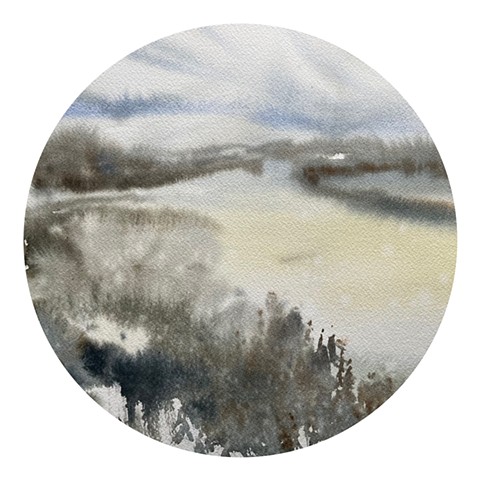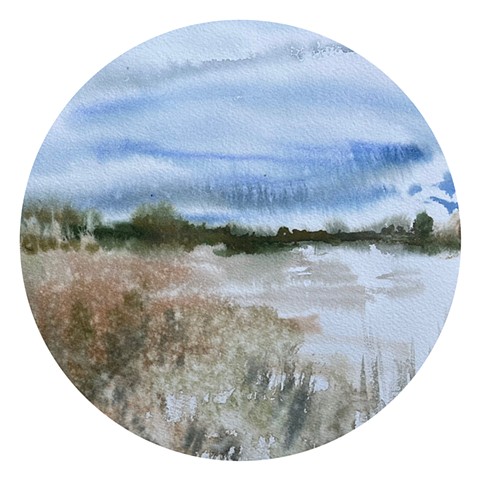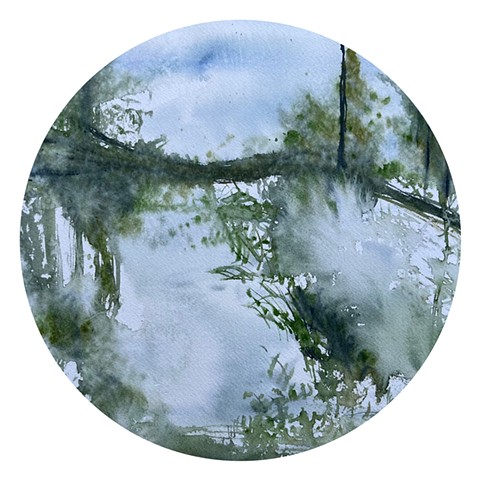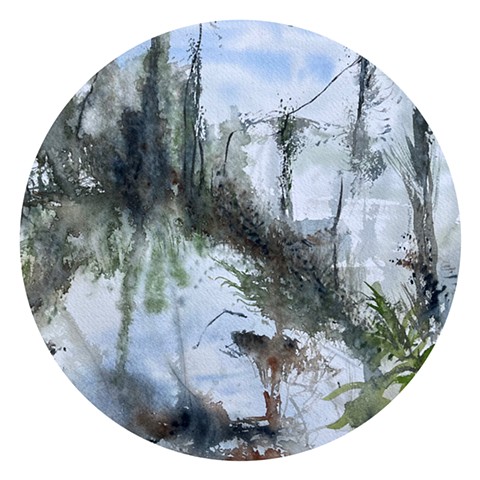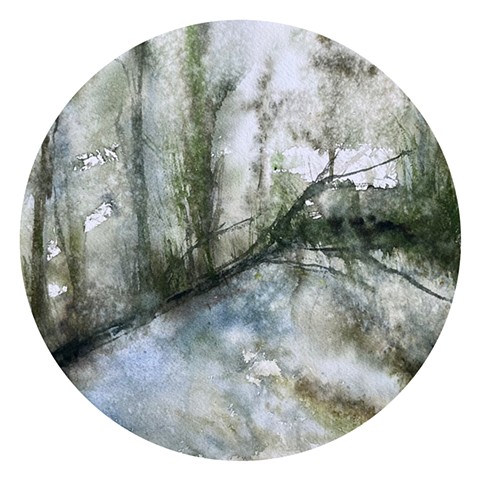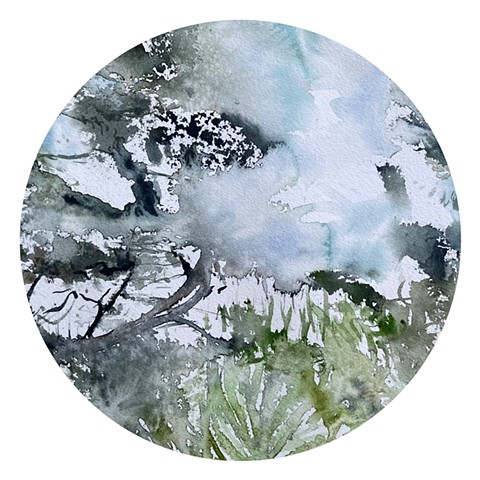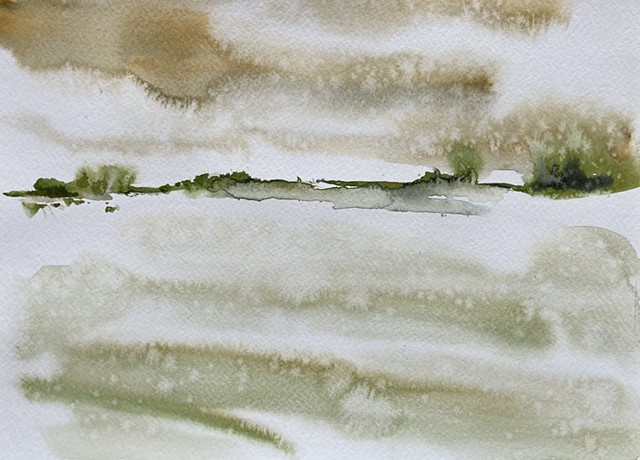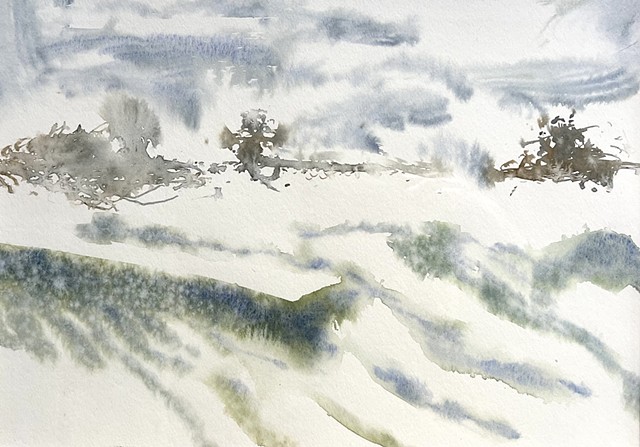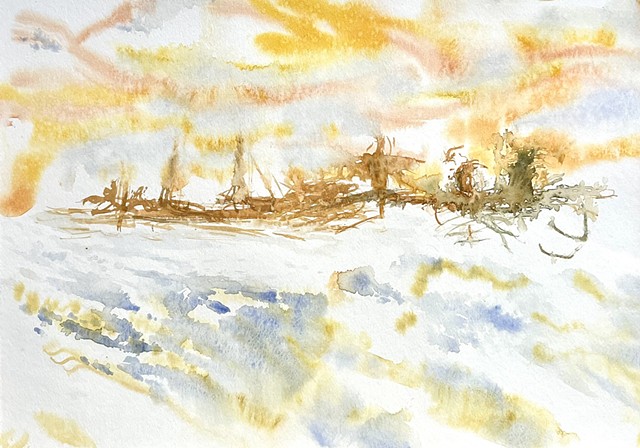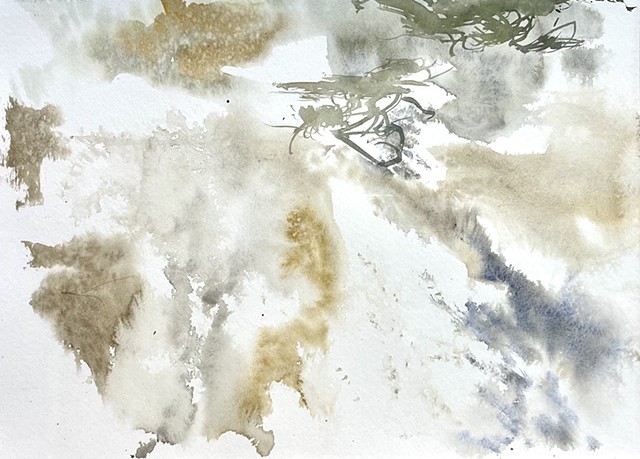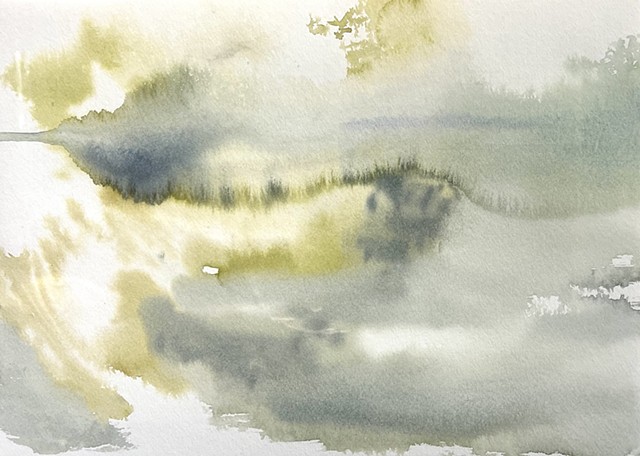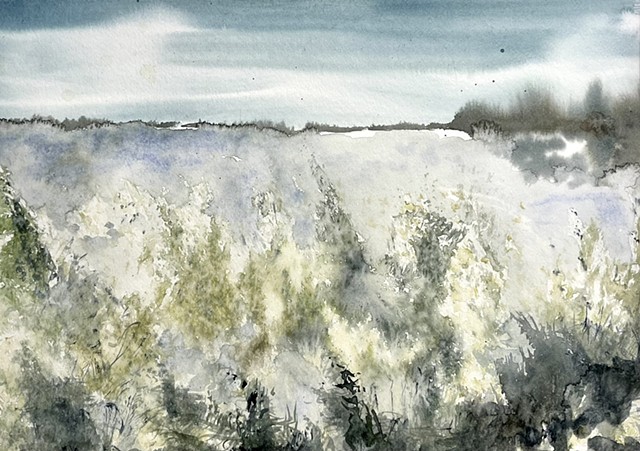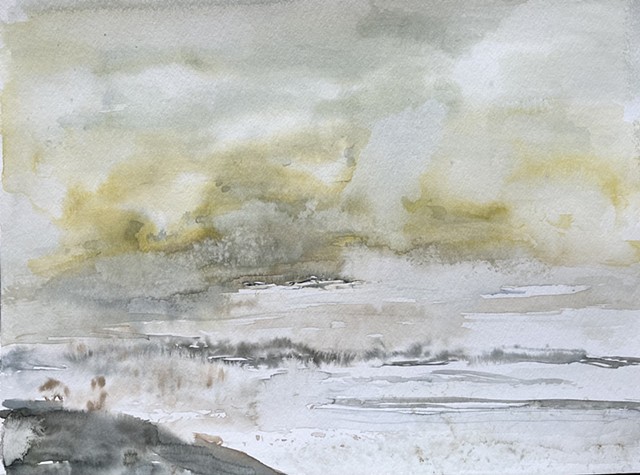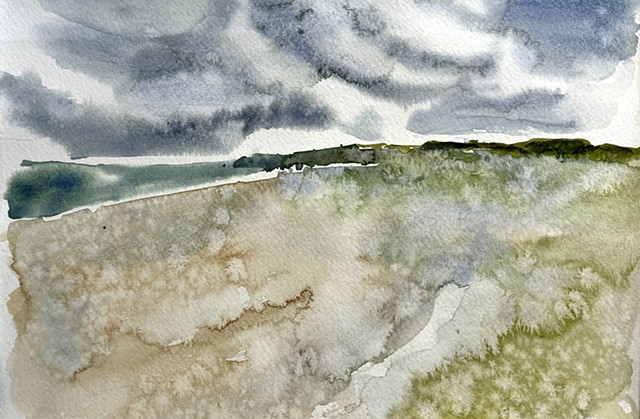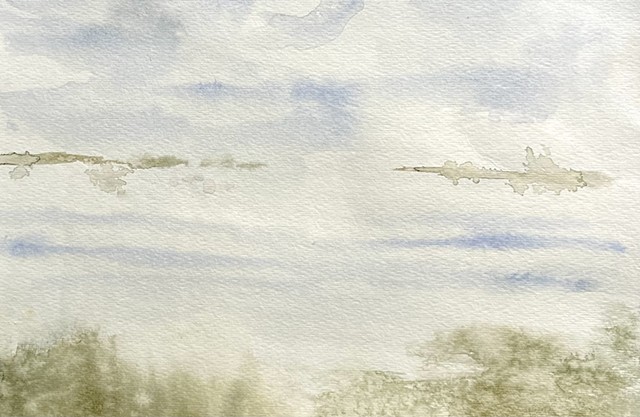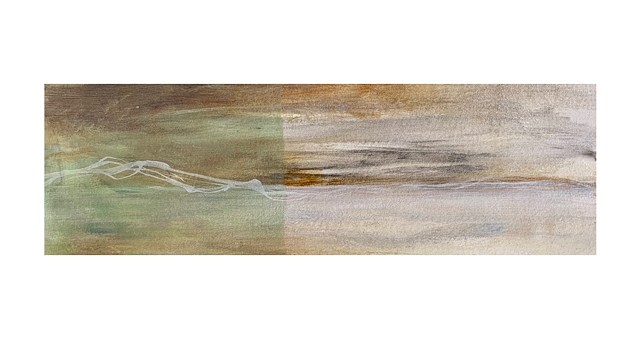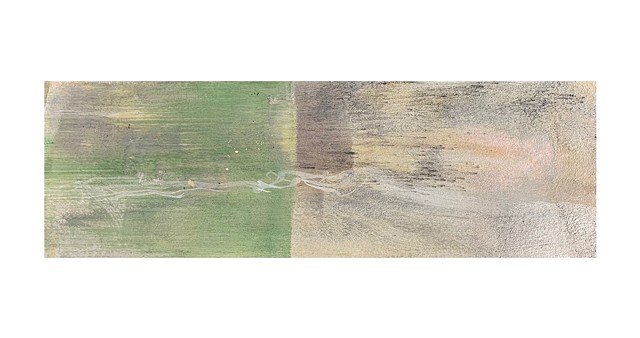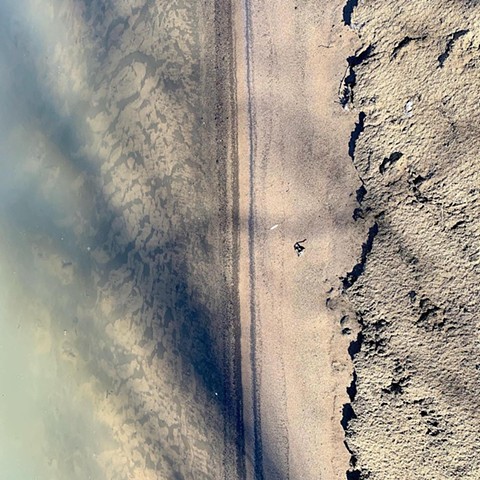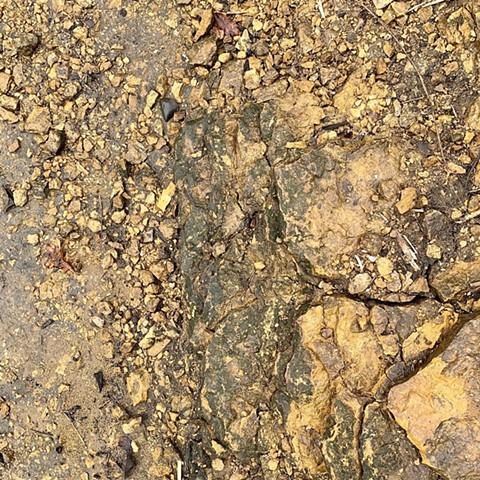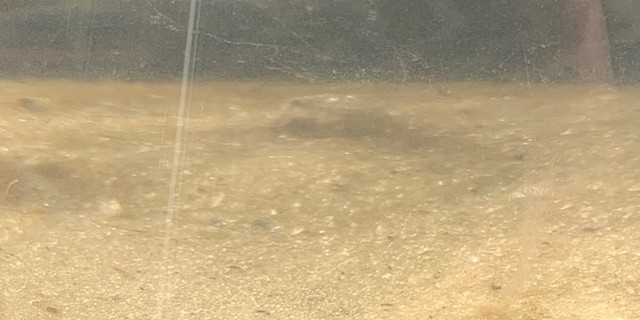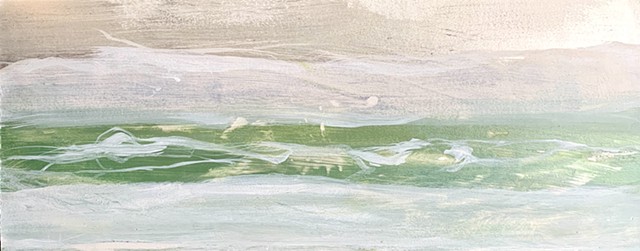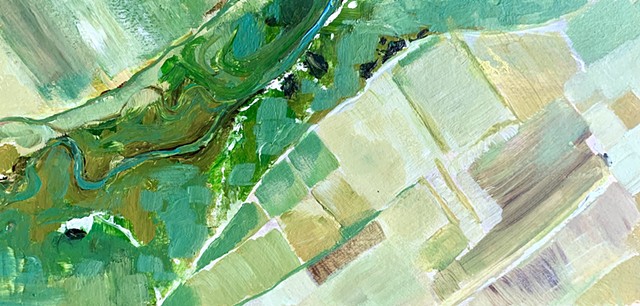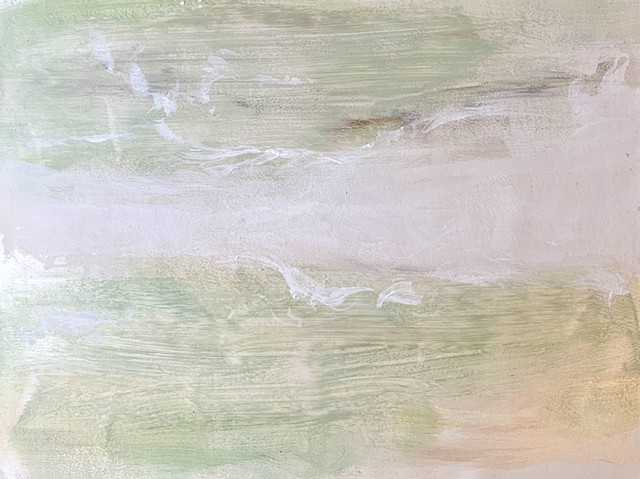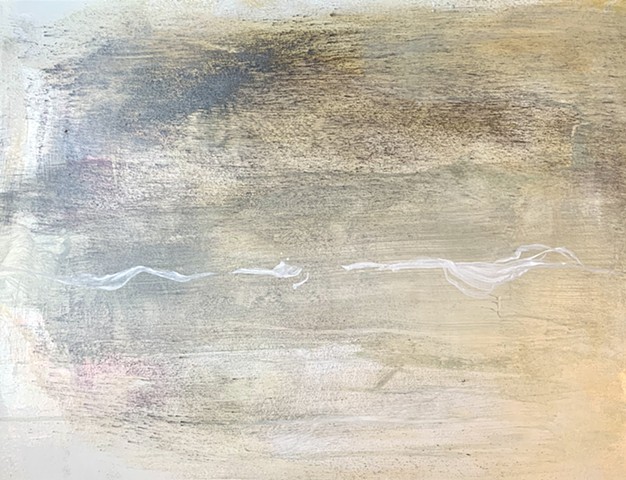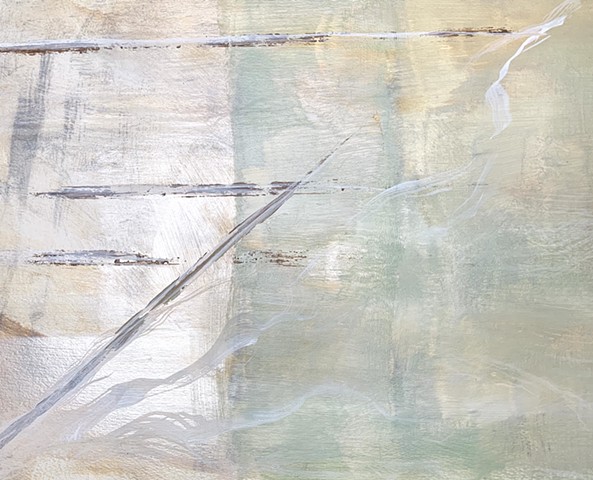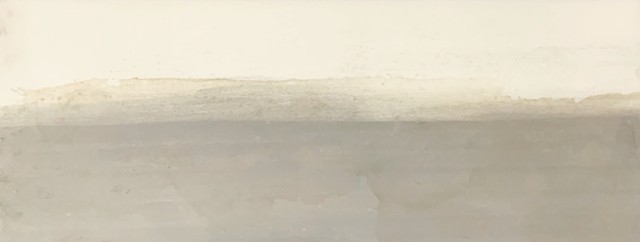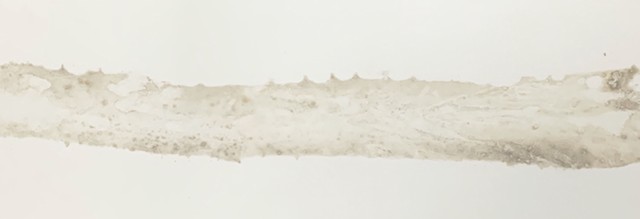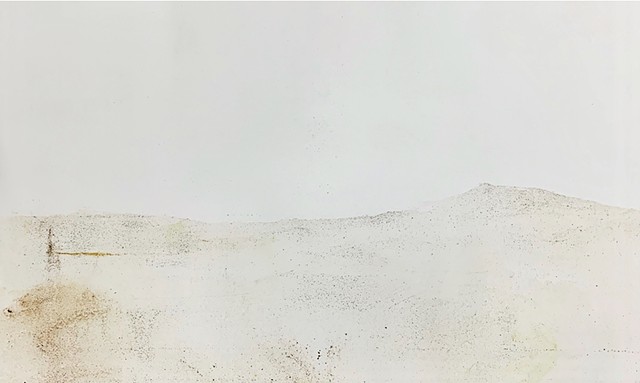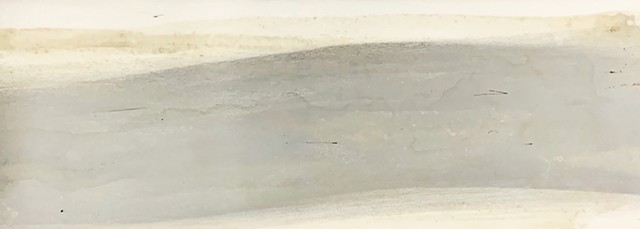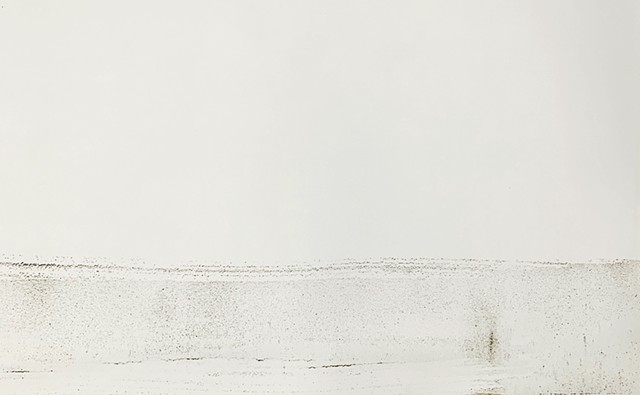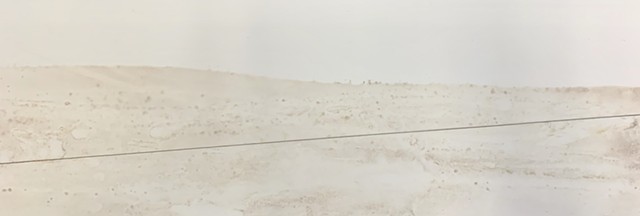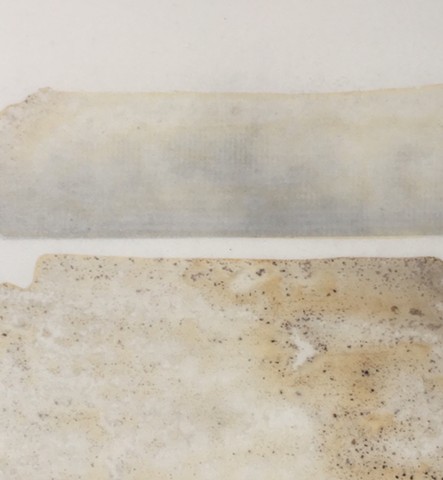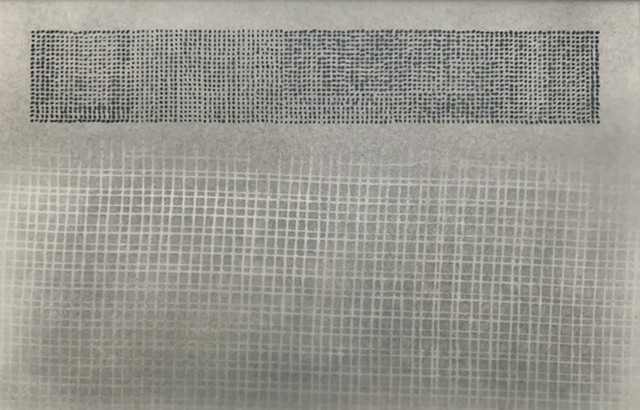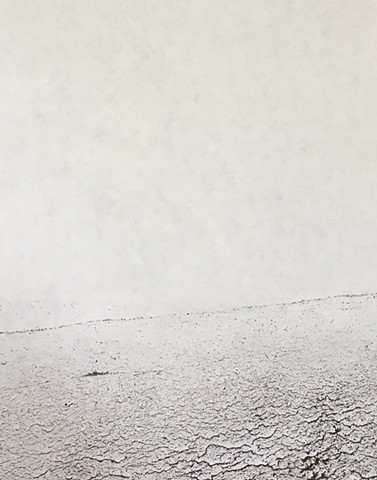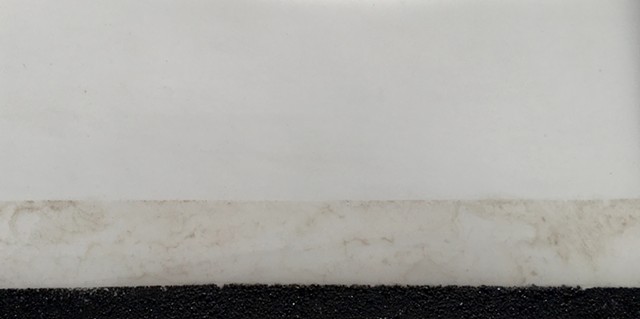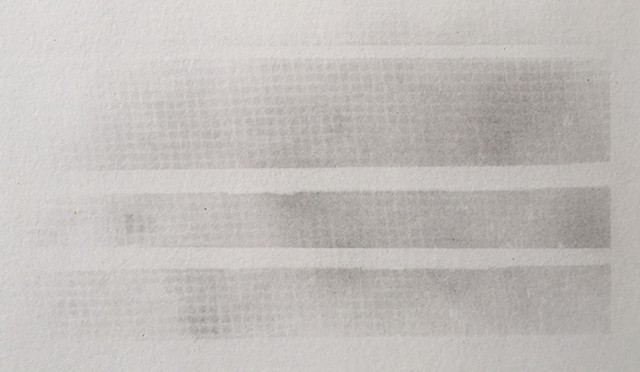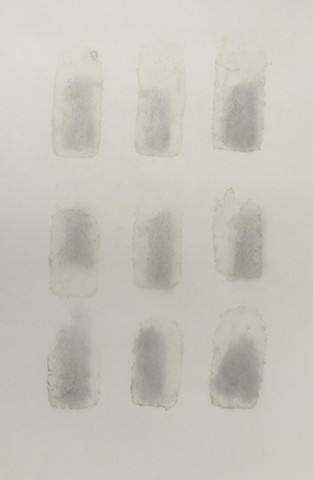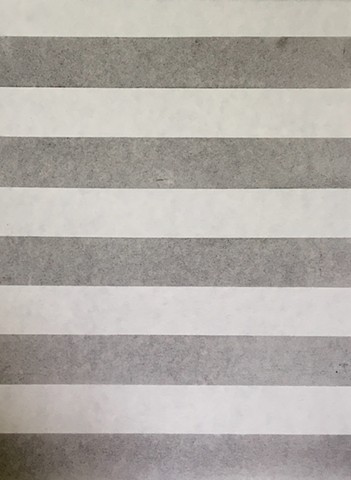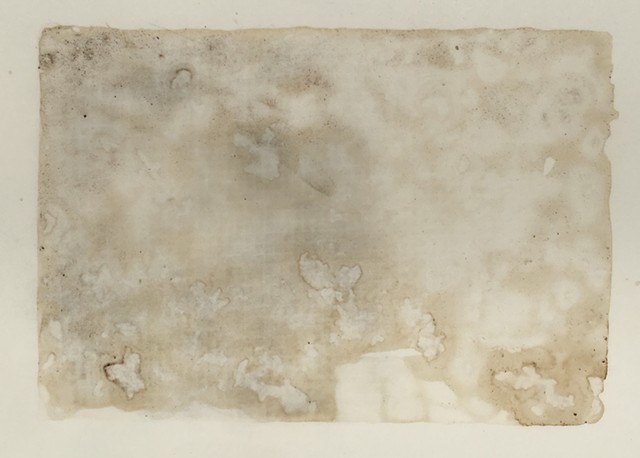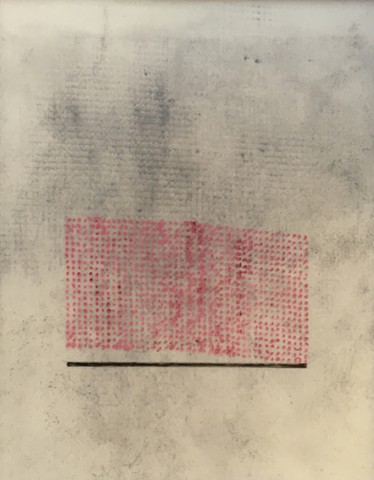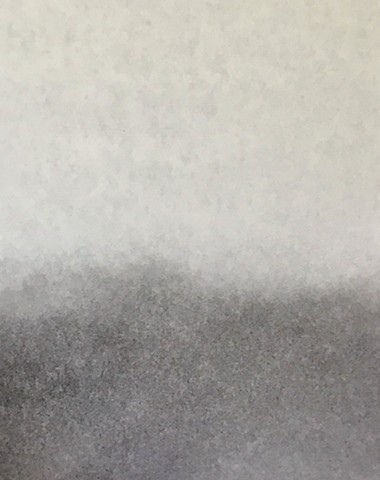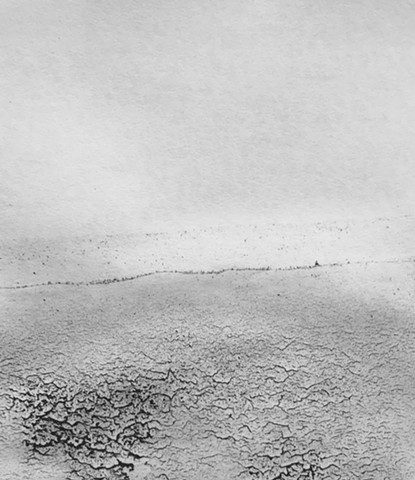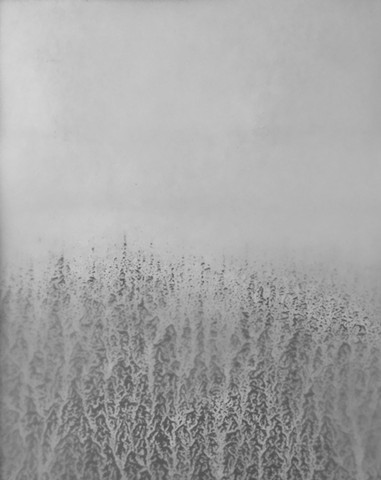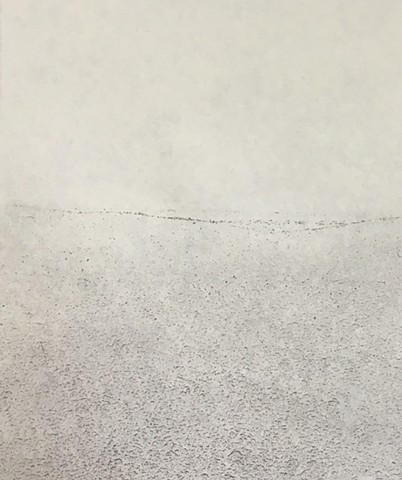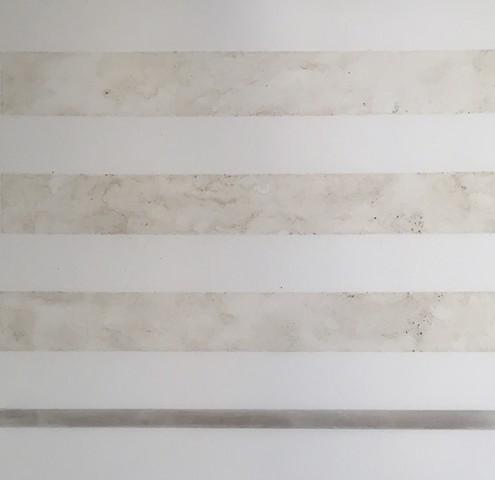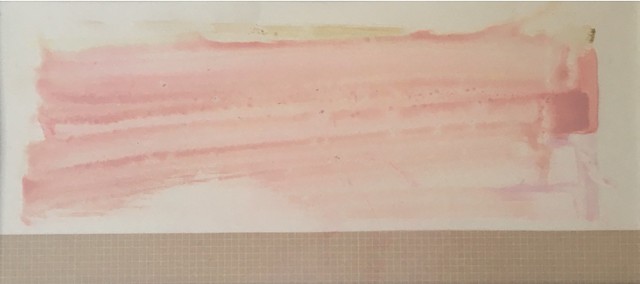Brackish Water
“Brackish” marks the collision of saltwater and freshwater, where currents clash, boundaries dissolve, and a precarious new chemistry emerges. This convergence is both the title and the driving force of my work. Using mixed media compositions built from materials gathered in ecologically imperiled sites, I confront the accelerating environmental crisis while inviting spiritual reflection. Each piece highlights places now on the brink: coastlines eroding, wetlands vanishing, waters turning toxic, and asks what it means to dwell amid such urgent fracture.
My practice is inseparable from place. I harvest soil, sand, vegetation, and water from my two homes: the Gulf of Mexico along Tampa Bay, where rising seas and intensifying storms batter Florida’s largest estuary, and the Kankakee River Basin of northern Illinois, once a vast marsh now drained and channelized in Indiana. These substances are not symbols; they are witnesses. I pour, dip, and layer paint with site water, letting the earth speak through every stain and tideline. The resulting surfaces hold tension: salt meets fresh, wild meets manipulated, sacred meets profane.
In many of my compositions, I intentionally remove the horizon line, disrupting traditional perspective and orientation. This formal choice mirrors the disorienting qualities of brackish water itself, where murky sediment and shifting salinity obscure clarity. The surface of water often behaves like a mirror, reflecting sky, trees, and light in ways that unsettle perception, inviting the viewer to question whether they are looking up or down, above or below, through or at. By removing or distorting visual anchors, I aim to recreate this sense of spatial suspension, echoing the physical instability of these fragile ecosystems.
A breakthrough came when frustration led me to fuse Gulf water with Illinois soil, flooding a pristine sheet of paper with a wave-like bloom. The uncontrolled bleed revealed a deeper truth: surrendering to the materials’ own stories can cut deeper than any planned gesture. That ethos of humility, stewardship, and the hard disciplines of listening and seeing now guides my studio, echoing my faith. I’d later consider that Illinois soil becomes gulf sediment via agriculture run off and the Mississippi watershed, of which the Kankakee belongs.
Brackish Water also insists on hope. Just as brackish zones shelter species found nowhere else, I believe spiritual and ecological renewal can rise where conflict is addressed through grace. My work honors those fragile thresholds, bearing witness to land and water that are suffering yet still resilient.
Since 2023 I have adopted a cyclical method: slicing 2.5 inch circles from the cast-off margins of large watercolors painted with site water. These disregarded fragments, glimmering with run-off pigments and sediment, seed new compositions, mirroring ecosystems where decay feeds renewal and every border is porous. The formal decision to crop each painting into a circle further deepens the conceptual framework of the exhibition. These forms recall images seen through microscopes or telescopes, tools of perception that peer into hidden worlds, while also referencing ancient symbols of wholeness, infinity, and the eternal cycle of transformation.
Painting en plein air with on-site materials, I hope Brackish Water presses viewers to regard the natural world not as static scenery but as a living, wounded testimony—complex, endangered, and urgently in need of our care.
Artworks are often matted using white archival mat board with one inch boarder behind non glare acrylic encased in a square two-inch-deep solid maple wood frame.







































